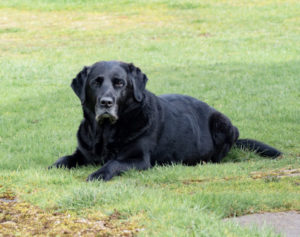
Photo by Brett Jordan on Unsplash
A home full of pets is a happy home. Whether you have a cat who thinks it is always in charge, or your house is full of wild animals, their presence is always sure to bring a smile to your face. That’s why it’s often hard to decide precisely what pet you should get.
Often, when it comes to adopting animals, families tend to choose younger pets – such as puppies and kittens. This is because they often seem cuter. They are smaller, and you get the added benefit of watching them grow up alongside your children. However, younger pets aren’t the best choice for every family. For example, they require a lot more care and attention than older animals and may not respond well to small children.
Adopting an older pet, such as a senior dog, can be very rewarding. They will likely have already been house-trained by previous owners and are just looking for a relaxed home where they will receive plenty of love and affection. With that in mind, here is how you can welcome a senior dog into your family!
Ensure your home is pet-proof.
Pets can be a little messy, and they aren’t really able to clean up after themselves. Therefore, when welcoming a dog of any age into your home, you need to be ready and willing to deal with a little mess here and there. You also need to ensure you are welcoming them into a safe place. Ensure that any items that can cause them harm are kept out of reach.
Additionally, you must also ensure that you have everything you need on hand to take care of them. This includes:
Comfort items.
- A pet bed
- Comforters
- Soft toys
- Squeaky toys
- Balls
Styling items.
- Dog shampoo
- Dog brush
Safety items
- Collar
- Lead
- Pet carrier
Necessary items
- Dog food
- Dog treats
- Food bowl
- Water bowl
- Water filter
Items for senior dogs.
- A dog ramp (in case they struggle to walk upstairs)
- A heated blanket (to help them regulate their temperature. They can also help manage anxiety)
- Health supplements (to ensure they get all the nutrients they need)
Additionally, you should ensure you purchase pet insurance. This can cover the cost of any medicines or medical procedures they need and save you valuable money should they need to visit a vet in case of an emergency. You may be met with overly expensive vet bills to pay for that you can’t afford without insurance. While this may not seem important when buying a younger pet, who is less likely to get sick, older dogs often need a little more care and attention.
Be gentle.
If you adopt a dog from a shelter, be sure to ask the owner if there was any particular reason the dog was left there. Unfortunately, many pets that have been abandoned or picked up by shelters have been subject to abuse and may feel particularly scared or anxious when you pick them up for the first time. For example, they feel unsafe in their new home to start with and may try to avoid contact with you. Knowing as much as you can about their history beforehand is an excellent way for you to prepare to welcome them into your home. It can help you understand why they might behave in a certain way and figure out how you can make them comfortable.
Ask the shelter if you think the dog will be comfortable in a home with children, as you don’t want to put the dog through unnecessary stress. Though many senior dogs are happy to play with little ones, others need a quieter lifestyle and could be the perfect pet for grandparents or older adults who live alone and need some companionship. Either way, they are sure to be a welcome addition to any family.
Take your time.
Younger animals often latch onto their owners very quickly, while older pets may be less trusting and take a little longer to warm up to you. As a result, you must take the time to let your dog get used to its new home and owners. Try not to overcrowd or overstimulate them during the early days. Show them affection, but also ensure they get their own space. Let them walk around the home and gain an understanding of the room. It may help speed up the process if they have an area in the house that is ‘theirs’. For example, you can keep their bed and toys in a particular area of the home and try not to spend too much time there.
Understand that over time, your bond will be stronger than ever – you just need to be patient and work at it from both sides.
Show them plenty of affection.
One way to put a smile on your dog’s face is to show them affection, especially if they are showing signs of anxiety or discomfort. Thankfully, there are many different ways in which you can show your pet kindness and infection. This includes:
- Cuddles
- Pets
- Scratches
- Spending some one-on-one time together
- Taking them for a walk
- Showering them with praise
- Playing with them
Remember, you can show affection in many different ways – it does not only have to manifest itself as physical touch. For example, animals are incredibly attuned to how we speak and heavily pick up our tone of voice. So, if you notice your pet is down, talk to them softly. Let them know how much you love them!
Treat them.
Senior dogs deserve plenty of treats! As soon as you grab a treat from the bag, you can guarantee you’ll have one delighted dog sat in front of you – mouth open and tail wagging. However, Dehydrated Dog Treats are far more than a delicious snack – they are often packed with a variety of essential nutrients that help your pet stay healthy. For example, treats such as Beef Tracheas contain high amounts of glucosamine and condrotion, which promote good joint health. Additionally, treats are great for oral hygiene, keeping your pet’s teeth and gums strong and healthy. They can also fight bad breath.








Speak Your Mind